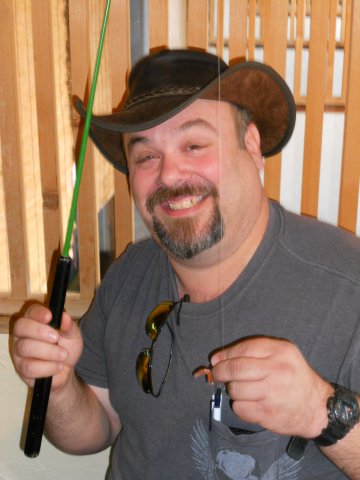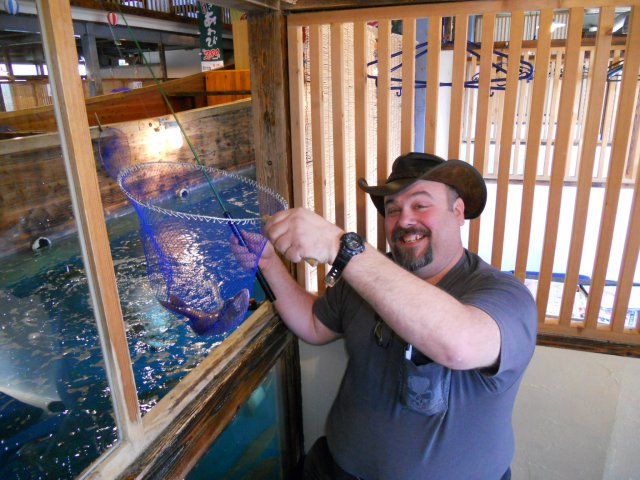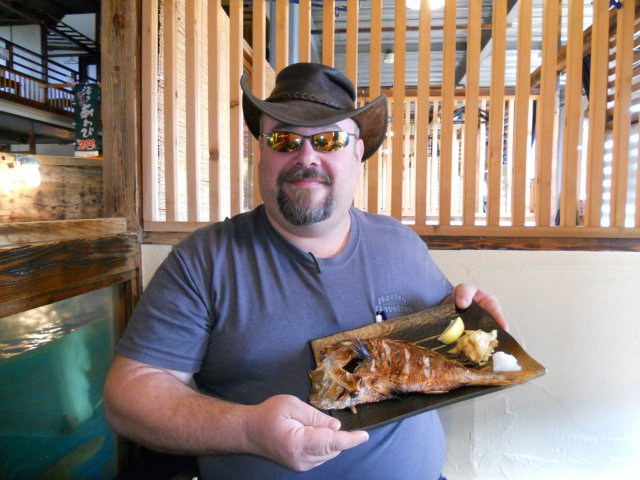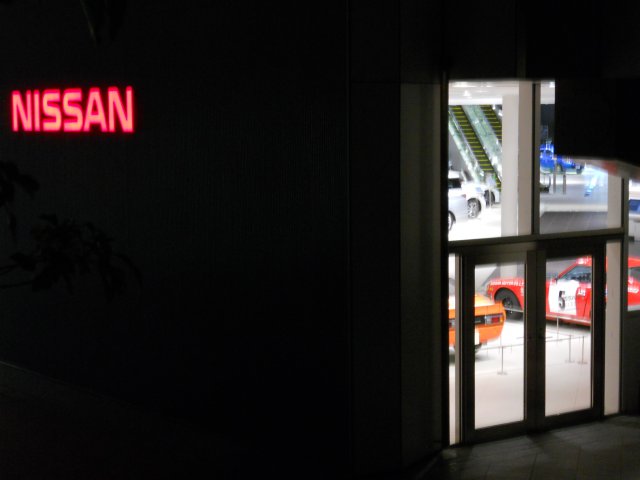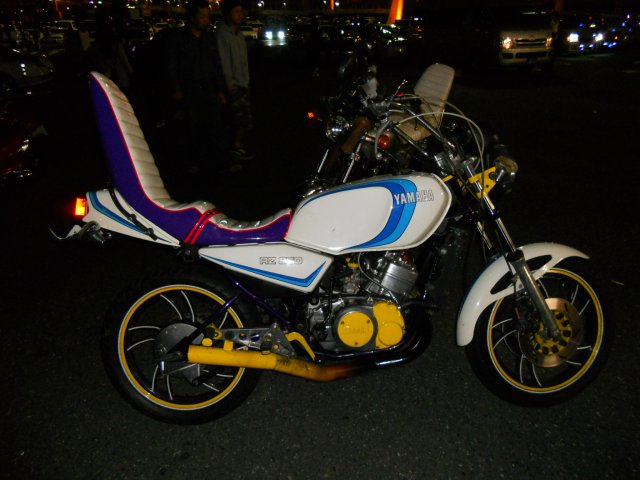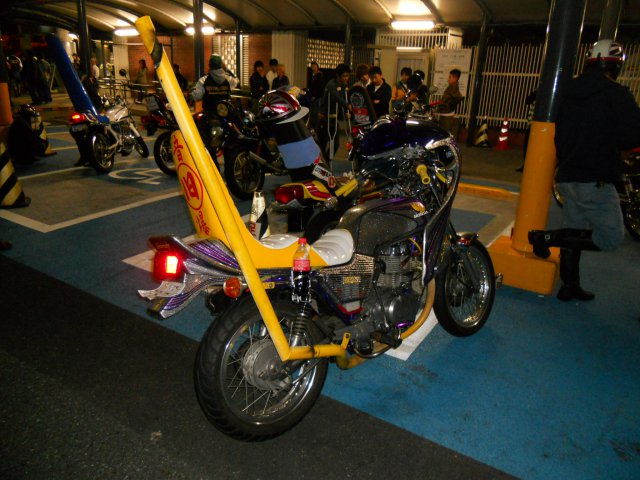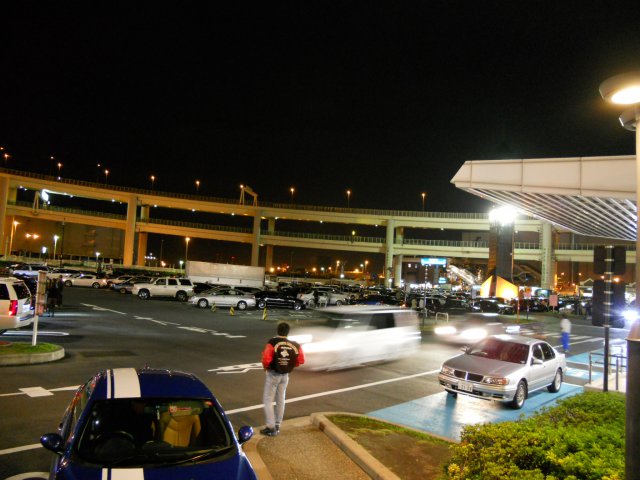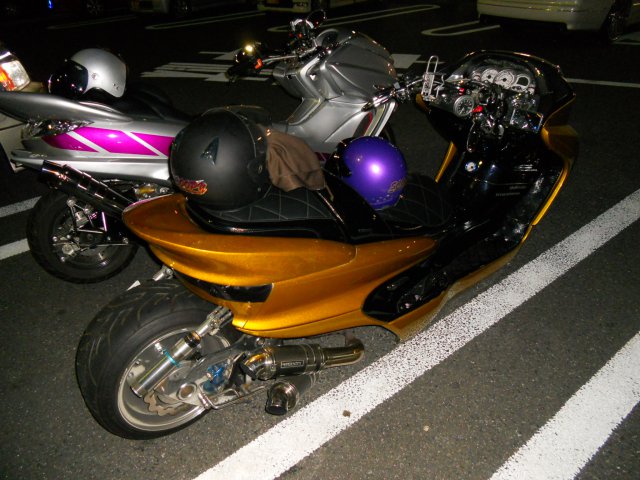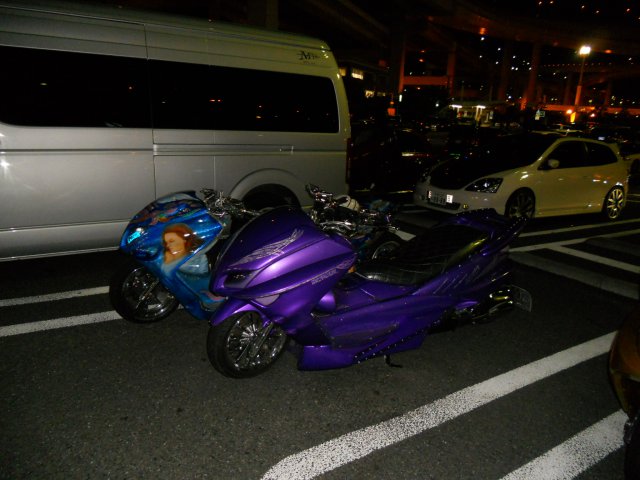-
Posts
9963 -
Joined
-
Last visited
-
Days Won
74
Content Type
Profiles
Forums
Blogs
Events
Gallery
Downloads
Store
Everything posted by Tony D
-
Hey! I think I know where that is! I was just there yesterday and that was NOT in the Gallery... I, too would be interested in the whereabouts of a Z432 in America. I came within days of importing an original green 432 to the USA in 1989 and have recently been in contact with that cars owner... If there are other examples in the USA, I would like to at least know their geographic distribution... (PM Me if you don't want it public.)
-
"Longevity may not have been something that was of major concern to the engineers when they were selecting heads for some of their JDM turbo engines. They may have known the problems associated with liners and EGT's, but thought what the heck, they pass inspection now and before the liners cause trouble, most of the cars will be off the road anyway. If this becomes an issue, we can afford to deal with one off's as they occur...... mentality." Planted a seed of doubt? Hardly, but you have convinced me you have a fully-entrenched mindset of a westerner! If this was the case, why have an O5L at all? The reason the non-linered heads exist is due to places where they can not be applied. If you knew the testing that goes into each engine permutation then the additional governmental compliance documentation and testing as well as for the home market type certification and classification you would realize at once what such a thought process came from: total disconnect with the realities of manufacturing within Japan in the automtoive market. Want an example? In the 70's when the emissions laws were changing, one Japanese Manufacturer came into a bit of type compliance issues with US EPA. They produced REAMS of documentation showing the statistical impossiblity that their engines would not comply, such was their rigid regimentation and control processes (this is not Jaguar...or Ford...or GM-H!) What it came down to was someone asked the testing laboratory in the USA 'what kind of fuel are you using, send us a sample.' (This was done in a roundabout way by an American who worked in the service department and had run into a similar issue in the past with vehicles imported from Europe...) The engineers in Japan were AGHAST at the fuel quality in the USA. But more importantly they realized when tested with that kind of fuel, their engines DID INDEED FAIL! The Japanese Solution? Air Freight vats of fresh gasoline WEEKLY to use in their emissions calibration and testing regimens. If the Japanese mindset is that they will airfreight fuel by the planeload to pass an emissions test...do you seriously think they would poo-poo catastrophic engine failure? In 1970 they changed ALL the cranks in the L24 Cars. They STOPPED PRODUCTION. Do you really think with almost 10 years of progression in Quality Control that they would seriously compromise longevity in such a manner? To even suggest it indicates unfamilarity with the process at the least. You are also missing the point on 'inspection'---this is not a 'western style' inspection. This is something where serial numbers and casting numbers are checked against a master list provided by the manufacturer. A Y70 would be listed as an acceptable L20A/E type cylinder head to have installed. So would almost any other head. An E88 would pass. So in that respect it would pass inspection. So would a 2T-G engine insstalled in a Celica where formerly a 2T engine (SOHC Pushrod) would have been, or a 2T-BR (dual carb 2T) because the BLOCK TYPE is still 2T and Toyota wisely chose to certify the block only, and not the head. (Similar to Nissan...) Outside the USA and Japan, where engine emissions was not a big issue.... there were no exhaust liners! They were P90 heads on L28's (Europe) or N42 Heads on L28's (Carburetted downdraught engines in Saloons in Saudi for example...) The presence of Liners in an engine or marketplace occurred where there was a requirement for EMISSIONS COMPLIANCE in N/A engines. The turbocharged engines got ECCS for emissions control instead. And in Japan where emissions requirements were slightly more stringent in some respects, they got both Liners AND an ECCS in N/A cars. But they never got liners in a turbocharged engine. Can you prove why you so doggedly believe this was a factory setup? Did you get a certification paper from Nissan stating so? Were there lead seals and safetywire on removable components like some of the emissions testing machines? Or are you convinced solely due to patina and lack of monkey prints? I can take you to a place in Michigan were (yes, even on Detroit Iron) there were Corvette components (like heads and manifolds) installed into Impalas before the sale (in direct contravention to federal emissions laws probably) and the owners would be in the same boat as you: Thinking they had a 'factory assembled engine' with these special components. If you know what you are doing, use the proper tools, and do it early enough in an engine's lifetime there will NEVER be any suspicion that the head, intake, or for that matter radiator hoses or water pump had ever been changed. That you have the only example in existence, and it goes in the face of what Nissan stated in parts manuals the world over supports the fact that someone changed your head. If they did it to one, they did it to 10,000 and they would have turned up elsewhere before this point in time. Including America where L20ET's were available from mid 82 onwards through Tomic Honda, K. Watanabe & Co, and myriad other JDM importers. Do you seriously think the people with engine blocks that were made of diamond-hard metal would so radically alter a basic foundational engineering tenet as to discard it wholesale on an EXISTING product line in extended development? Seriously, is that what you are contending? Think about that long and hard. That's a pecularily western thought process. And in Japan at that time, that was NOT how things were done! Remember I was there, and right now I'm typing this from Tokyo! What you suggest would be akin to the Prophet Mohammed popping up and saying "Howzabout some delicious pork ribs, forget all that HOGwash from me before! This is my latest prophecy so that overides everything prior! EAT UP! Pork-Akbar!" It just don't happen!
-
People do things...because of ease at the time. When did you buy this engine/car? If it wasn't 1981 through 1983 straight off the dealer floor, consider the fact that a service replacement head was put on a turbo block. This CAN be done without a subsequent owner knowing, and it is the most logical explanation for it's presence. I have seen P79 heads on turbo cars, I know better than to claim they were put there in manufacturing. Same as I know that Y70 L20E was not factory in the Maxima Wagon (engine code said L24E on the California Emissions Sticker...) Same as I know just because TA22 Celicas in Montana came with 2T motors, the presence of a 2TG DOHC engine means it could have migrated down from Canada OR been a swap as only ONE was ever imported to the USA (TA22-00005) Never underestimate the ability of a professional to make it appear as if nothing has ever been touched before. On an L-Engine that's deceptively easy. Now, on the other hand, if you can trot out some Nissan Documents that show experimental engines, some development program, or irrefutably rebut the 'Financial Logic' of the prior post of mine consider the possiblity that the Y70 was a replacement. And making definitive statements like that without proof other than asupposition may provide bad information to someone somewhere down the line. The logical deduction is that sometime early in it's life, a Y70 was more expeditiously available and was swapped to a turbo engine. This would not be untoward, and would not affect the vehicle's ability to pass inspection in Japan. But from the factory? I'm in the 99.99999999999% position that it wasn't, but I leave that 0.00000000001% open for someone with documentation to show it may have happened for one reason or another. But I wouldn't make bets on anybody ever showing up to contradict what Nissan has already stated as fact: No liners from the factory on Turbocharged Engines due to the EGTs involved. If they differentiated oil cooled differentials from non, and oil coolers on engines from non...depending on market and vehicle to increase longevity or simply make things last -- I think they had a handle on what not to put on an engine to decrease longevity and would religiously stick to the plan. Why would your ONE example have it? Doesn't make sense unless someone changed it. And that change logically would occur post-factory. Dealerships do a LOT of gnarly things customers don't know. They DID exchange crankshafts in the 240 you know. Not service engine assemblies, crankshafts -- that takes some work to not leave a trace new, but after 20,000 miles? Not a chance in hell you could tell upon disassembly it was monkeyed with!
-

how do i remove a pilot bearing?
Tony D replied to theguppies's topic in S30 Series - 240z, 260z, 280z
Stop grease and bolts. Find something that fits TIGHTLY. A wooden DOWEL will do it, but a piece of appropriately sized rod stock will work. If grease is 'squirting all over' then you got something that doesn't fit closely enough, and are not holding it straight. You have to let it pilot in enough to let it go in straight and then hit is SMARTLY (if you worry you will hit your hands, grab it with a vice grip!) I started with wet toilet paper, actually and not grease. Makes less of a mess. Sopping wet, the toilet paper is semi-colloidal and works just as well at building hydraulic pressure. I have never used a pilot bearing puller. They have nice ones now. But an old input shaft, a hammer and some sopping wet toilet tissue or THICK grease (stick it in the freezer) will hydraulically force the old bushing out with little fuss. But only if you have a decent seal on the forcing plunger (input shaft/bolt) to the bearing housing. I have seen at least one technician who chucked his assortment of input shafts into a lathe to knurl the shafts, and cut O-Ring Grooves in the pilot bearing end. Said it helps hold the shafts in there when he's aligning clutches (uses light oil on it I guess), and makes for a TIGHT seal when he uses the same tool to remove old bushings---you guessed it, using thickened grease. Though he mentioned in one case he used wet sawdust (?!?!?!) I would not recommend that substance, but I can see how it would work if that is all you had access to! -
Because it was some time ago that I saw it! It was in the same yard where we got Jocamin her Antlers and you snapped the photo of the Stretch Limo, matter of fact! The O5L is in someone's posession, though. Brand new, bare, never been on a block, still got the part number tag on it...
-

I Bit the bullit on a 406!! SBC 530 hp and 665 nm tq
Tony D replied to frank280zx's topic in Gen I & II Chevy V8 Tech Board
But at least you didn't have us 'guess your horsepower'! You came right out and told us: 530RWHP "on the bench"---which, I guess, is similar to us guessing... I'm telling you, STOP THESE GUESSING GAMES RIGHT THIS INSTANT! You are a BAD man! A very, very BAD man! -
Target of Opportunity... saw them of really high quality (Not to mention they had the proper Watanabe Crest on the valve caps...) so I HAD to get a set. Next time, the matching set of valve stem caps GOES WITH ME before going in for tire checking and rotation. Someone saw them the last time and apparently needed them more than me. And that was in 1992. It's taken me a while to find them again...and there they were on a blister card hanging in a parts store! Of course the lightweight separate conical washer lug nuts were out of stock in Nissan Thread (plenty of 1.5 Toyota Crap...) so no extra set of those. Damnit. As it was the bill was 24,000 yen and I only left the store with one medium sized bag, and I will not be anywhere NEAR my weight limit on baggage going back home! Now, if there's time to go to that shop advertizing the G-Nose Parts I could rememdy that 'excess baggage' situation...
-
Goin' Fishin! Look, I CAUGHT one! Now the place was so kind as to prepare it for me! So off we went, and later that evening I ended up here: Dorothy, I'm not in Tennesee! This (these) got to be a dead giveaway! Any specific guesses? I'm not asking for you to pull dyno numbers out of the air... It should be pretty easy to nail down geographically to the city and country, and depending on how closely you observe things, to Highway and Exit... And on another note, this one I found entertaining, almost "Photo not needing Caption":
-
Yeah, but did you get the thermal printer that was available with the Timex??? <Tony D Factoid/History> Some may know one (several) of my e-mail addys are 'turbotony' at domain name... When I started in vehicles, I turboed just about anything that moved. My Corvair had one, my Beetle and Bus had one, and I sold a lot of engines with conversion kits out of my parents garage (bought and shipped from Turbo City in Orange CA, to be specific...) So it wasn't a big jump to be called 'TurboTony' by your car friends. Well, some of us are old enough to remember where this story is going. One day someone walks into the computer lab, and notices the first thing I did was push in "The Button". Well it wasn't long before my car friends noticed the Computer Geeks ALSO called me 'TurboTony' And from there, the rest is history.
-
I bought metal hex valve stem caps, and a bitchen valve core removal tool with a screwdriver grip on it.
-
That is describing a standard N/A spec engine in several different JDM applications. That a turbo was added (all that turbo stuff is an external bolt on!) to an N/A engine should not be a surprise. No Nissan Turbo Engine came with liners in the exhaust. If the L20ET came with liners, why in the WORLD would they bother with the P90 or the O5L? From a corporate bookeeping standpoint that would make ABSOLUTELY no sense. The ONLY reason a P90 or O5L head exists was for Turbos. Otherwise worldwide the easiest thing to do would be manufacture and stock a single universal head: the one with liners in it. Beware of making assumptions that anything coming out of Japan through a used engine outlet or in a vehicle was the way it came from the "factory" unless you were the one taking delivery in person when it was new!Using your criteria, my Maxima Wagon with the L20E and Y70 Head sitting in the JY in SoCal was a factory fittment as well. Professionals doing work will leave no trace. Remember I worked for an OEM (and still do in a different field...) and there are things that happen before cars are delivered (and in some cases back in a service bay while the customer waits outside due to 'insurance regulations') that would make people shudder. And from all appearances, they look "Factory Stock and Fresh" when they see them up on the rack the first service call after buying them! Ever consider the reason most shops have the 'Due to Insurance Requirements we regret to inform customers that they are not allowed on the workfloor' is more with someone observing an arguable negligent act by a 'competent tradesman' which could result in far more litigation and liability down the road than any simple slip-and-fall? But I digress...
-
On an aside... a microdrill on the pressure side of the regulator will introduce an air leak to the manifold. But a small one. On a MAP based system that means you use minimally less idle air bypass. under boost you have a miniscule leak of air. But on shutdown if you see fuel leaking... It sounds stupid I know, but take a look at that 1-80 drill set and see if you can live with a vacuum leak that big if you wrap a piece of foam over the body of the reg... "Tatletale Hole" There are ways to set these up so they don't vent externally as well but it's far more complex.
-
You got it to work right without disassembling it and cleaning out the aluminum chips before installation? Wow! To have it work long enough to fail two diaphragms looks like great service life from MPE! On another note, diaphragm failures (premature) are usually chemical or stress related (if the materials are up to par)... If you haven't twisted the diaphragm so it's not pinched in operation, then that leaves chemical attack and materials (which could be inter-related.) What does the failure point look like? Does the diaphragm look cracked and brittle, or is it abraded? Is the elastomer rolling apart in little balls and all mushy, or flaking off in chunks which have sharp edges to the resultant particles? A photo of a failed diaphragm would do wonders if you have one. All that being said, I don't know that it's the fault of alcohol being in the fuel, but more a choice on cheap materials being employed in the construction. I have seen similar things on knock-off BOV and Wastegates made in China versus being made in Japan. The 'rubber' diaphragms were just crap on some of the Chinese Stuff. In some cases, putting a Japanese Name-Brand repair kit into the Knock-Off Body solved the issue pointing to substandard materials (it looks the same, but doesn't PERFORM the same) on the part of the Chinese Engineering Team. Or on the MBA's that decided to go with SBR instead of High Temp Red Silicone because it was 20 yuan cheaper per unit...
-

Guess the 280ZX Turbo RWHP based only on Dyno video
Tony D replied to cgmeredithjr's topic in S130 Series - 280ZX
Depends on what you desire for 'documentation'---in the years before civilian internet what do you do? The Electromotive car could with ease, boil the tires from the entrance of the back stretch at Riverside, to the entrance to the corner at the other end at speeds approaching 160mph... and that was with heavy aero downforce. d If think if they say it made 1100HP (from the mouth of the dyno operator, engine builder, and various other team members from the era) I really have no reason to doubt them. That, and the fact that Nissan Corporate spokesman made a BIG deal about the VG30 being (and I quote) "the first engine of this size to make 1100HP"... And the fact that the same Nissan Corporate spokesman got VERY perturbed when I mentioned the #83 Electramotive car making that kind of HP from 200CC's less and almost 10 years before... His response was 'they were a privateer'... No dispute on the number, just an annoyance that a number not widely known outside corporate circles at the time (non-disclosure arrangements usually do their bidding by having people keep quiet long enough that whatever they were going to blab about no longer matters, or long enough that anybody interested will have stopped asking about it by then!) When the same number comes up from several different people who were at different points on the project, it's 'independent verification'---kind of like finding references to Thai Trade Delegations in Chinese Texts for ventures to the Ryukuan Kingdom which cross check to Okinawian Scrolls to confirm a date in a Thai Stone Inscription which only uses Bhuddist Circular Time References and Anamistic Character reference for the year. Before the internet, there was a way to tell what the truth was... unfortunately that's becoming a lost art, and fabrication of the truth is becoming far too easy for lazy investigators! <EDIT> Seriously, do you think a handwritten list of water brake measurements would be accepted? If they even exist now 28/29 years after the fact? And even if they did, would there be anybody who would look at them (uncorrected) and do the interpolation in their head? I mean I could see some people here looking at the raw data and from familiarity going 'woah!'---but unless it's a nice Mustang Graph people will look at it like just another sheet of handwritten ledger entries and gloss over with a ethereal sales executive's 'So what am I looking at here, guys' kind of exhortation... -

how do i remove a pilot bearing?
Tony D replied to theguppies's topic in S30 Series - 240z, 260z, 280z
Nothing can not be solved with a liberal application of high explosives... -
O5L is the turbo head. Someone mislabeled or mis-sold the Y70, it was an N/A head.
-
Hey! Waitaminit, aren't you the guy asking if we shouldn't lighten up a bit? It could have been a Homer-Doh click of the post button, and now in a panic he's lost control and is running around the room flailing because the exit post button doesn't immediately appear to be present to log back on and complete the thought. Or it could simply be a post-hit generation ploy to get to the magic number for classifieds...and he realizes now these posts in this forum don't count for that total so the gnashing of teeth is happening. I was once told I "was a very bad man!"
-
Well, there's a post from the Union Carbide Flagship Plant hometown... any particular reason? Anything you wanted to add?
-
Find a Running Clean 70 for less in better shape and buy it. I don't think you will. Depending on what the VIN was, I'd be interested in it! It's a mirror image of my 70, HLS30-06330! That is by no means an outrageous price for a running car in that overall shape. Especially in that neck of the woods.
-
Is it oil, or is it sooty goopy solventized gasoline that looks like oil? My question was never answered, other than an ASSumption that the 'gauge reads right'... Likely something is incorrectly wired, and the ECU is in "Limp Home" mode---does it rev above 2200rpms?
-
Precisely... What gets me is Ron's honesty: "We just did a BMW Grind to have something to offer. People were happy, but it wasn't right. We learned a lot working with Electromotive. And we incorporated what we learned and did all our cams for Datsuns over based on what we learned! There are still people who want those original grinds, they made power, but the stability wasn't there like the later grinds. It's funny to see our original stuff still being sold, they do make power (shakes head) but what are you going to do (chuckles)..." Paraphrased "We kinda screwed up just to be in the market. We learned to do it better. We made it right. People ripped us off then, and are still selling that old stuff, even if it isn't right!" What a breath of fresh air.
-
Oh, and my tastes in music are pretty wide. Ted is a mainstay, but they range from the above mentioned Gollumisim to Onedakoza and various indegenious beats from the jungle (akin to strangling a cat manually with percussion accompaniment.) I can usually select something that will keep me enthiused but drive off just about most people. I don't do Country, Western, or any combination thereof. That does not include Bluegrass...
-
It's just that the word is not "Mute" (that means silent) it's "MOOT" (meaning the point is no longer an issue, or fake)! It's not "A Muck" (something akin to mud), it's "AMOK" (insane ranting and out of control actions). If it was a mispelling, it's one thing, but it's the totally wrong word. It can be summed up like this: The ants are my friends, they're blowing in the wind. The girl with colitis goes by. No, its "The answer, my friend, is blowing in the wind." And "The girl with Kaliedoscope eyes." DIFFERENT MEANINGS ALTOGETHER!
-

Fuel starvation on left hand turns - gauge close to E
Tony D replied to NewZed's topic in Fuel Delivery
If it's near "E" you will have problems. If you put in a lift pump and about a 2L surge tank with the return line flowing to it, you can extend your tank pickup right to the bottom and suck down to nothing in the tank and never miss a beat. Just make sure the tank is TALLER than it is around. Kind of tough to do in the space at the back of the Z. The #75 Cunningham Racing Z32 had TWO surge tanks, almost 48" tall! They were fed by two pumps apiece, and then the main pumps went forward each fueling one set of injectors. The tanks were about 3" in diameter, and went from the top of the skid plate under the car to literally touching the roof skin! They did NOT want to suck an air bubble into the main fuel pumps under boost. That engine was capable of making 1100HP, and in most races was restricted through two 26mm intake orifices on the turbos to only 760HP... The key to not sucking air is not allowing the fuel to slosh away from the pickup, a Tennis Ball Can would be almost the perfect size for a stock car, some 3" aluminum tubing with a conical bottom (slosh baffles at the top of the cone), with the fuel picking up out of the bottom of the cone, and fuel feeding in tangentially midway up the tank with fuel return off the top...piece of cake. Now make it fit back there with two pumps and an R200... -

Guess the 280ZX Turbo RWHP based only on Dyno video
Tony D replied to cgmeredithjr's topic in S130 Series - 280ZX
Install it like a VW or Corvair and they won't come loose. Chill in LN2, heat head to 275F and have a heavy-press interference fit at THAT temperature differential. If they kept my 140 Seats in place when my CHT said 600F, they will stay put in a water-cooled Datsun!

